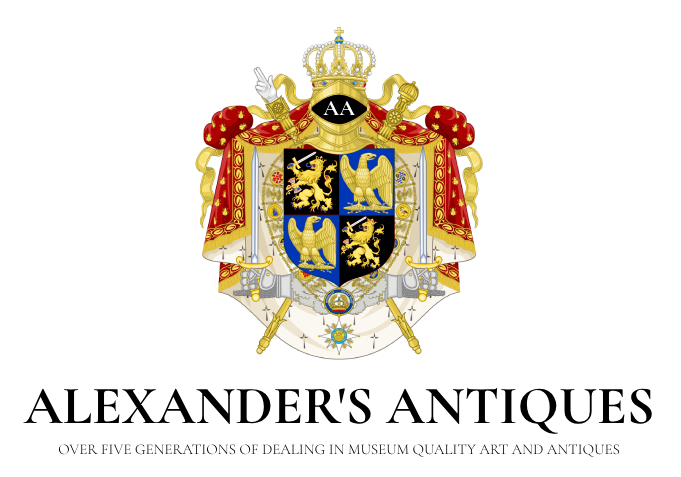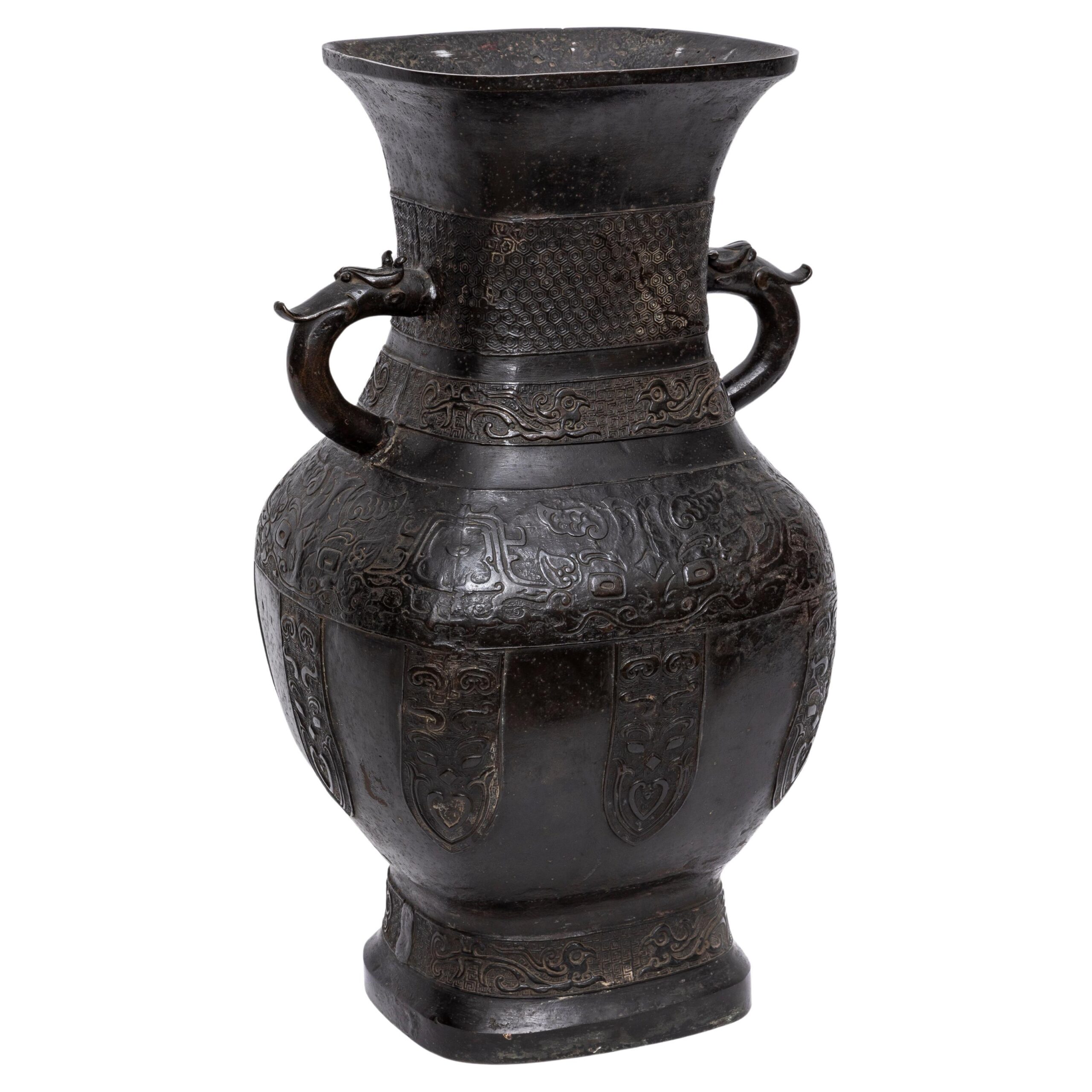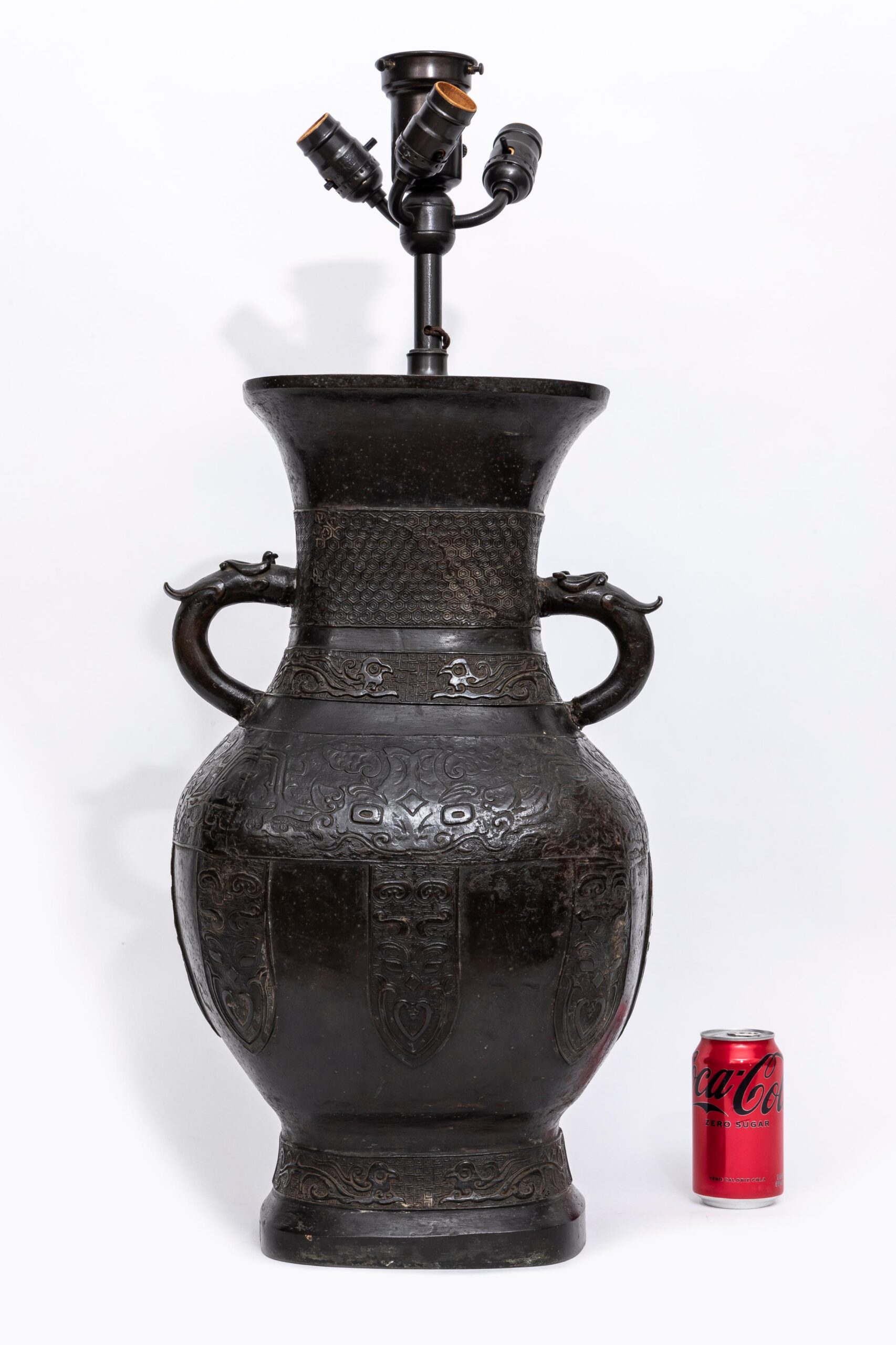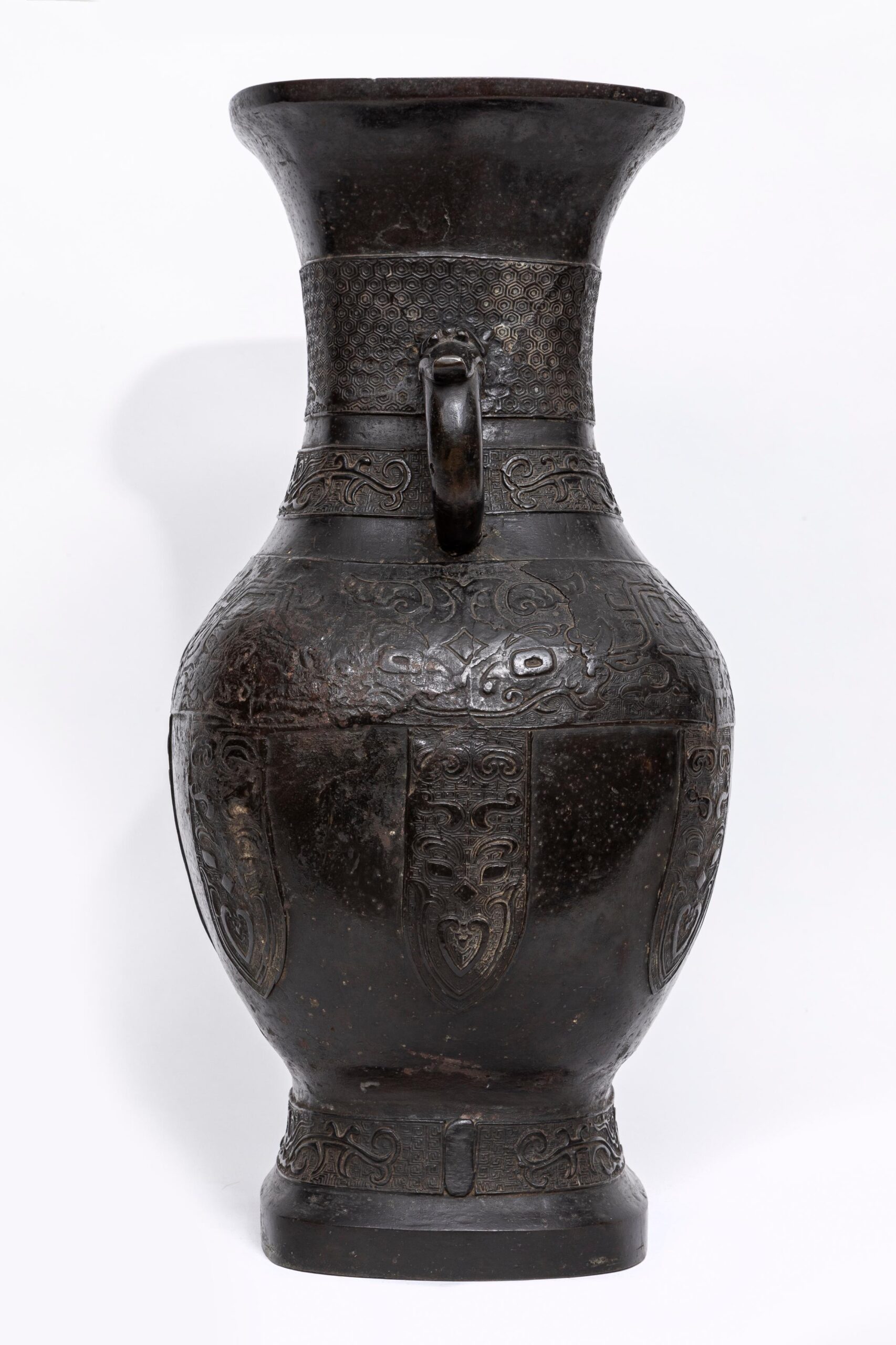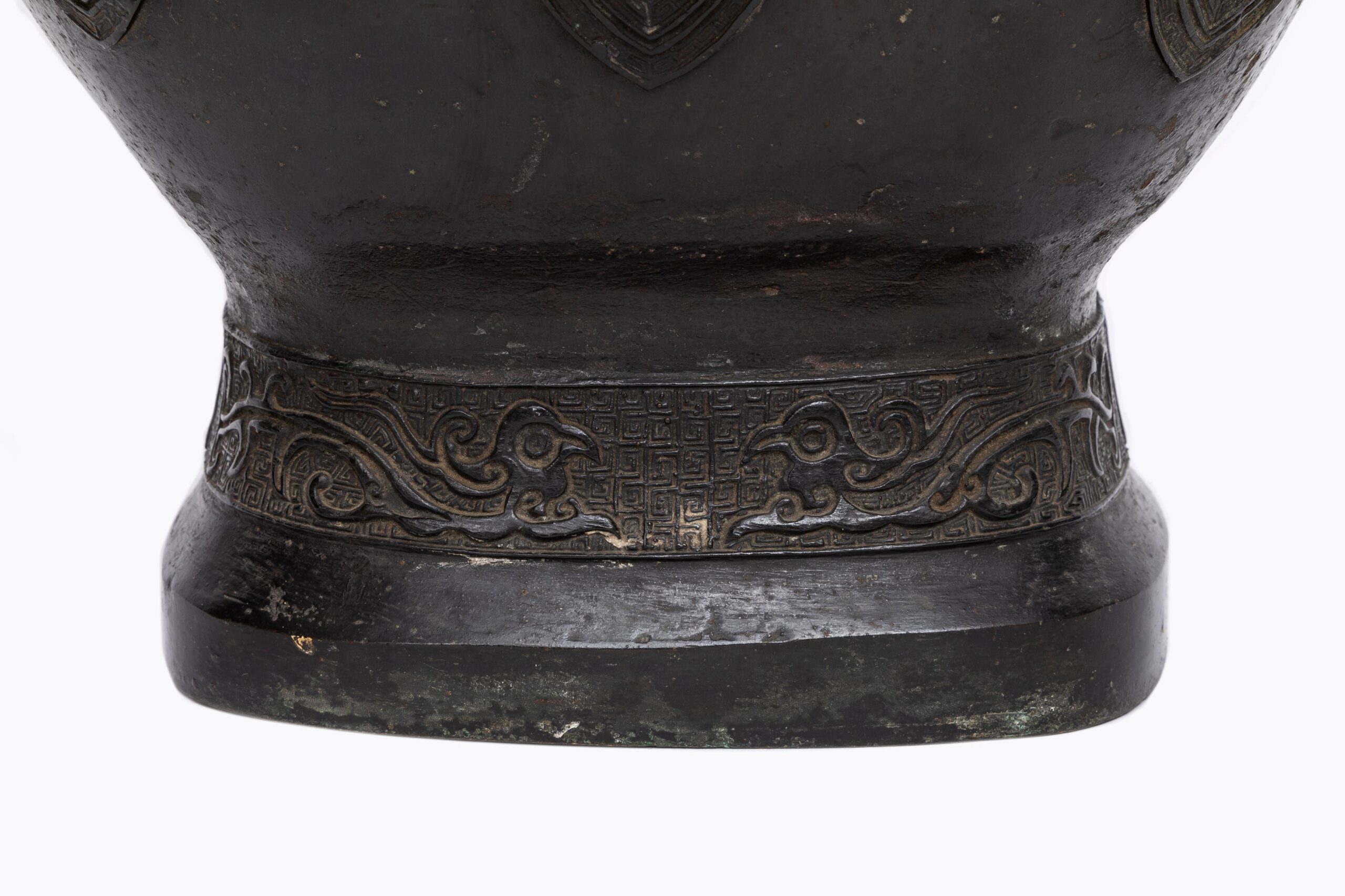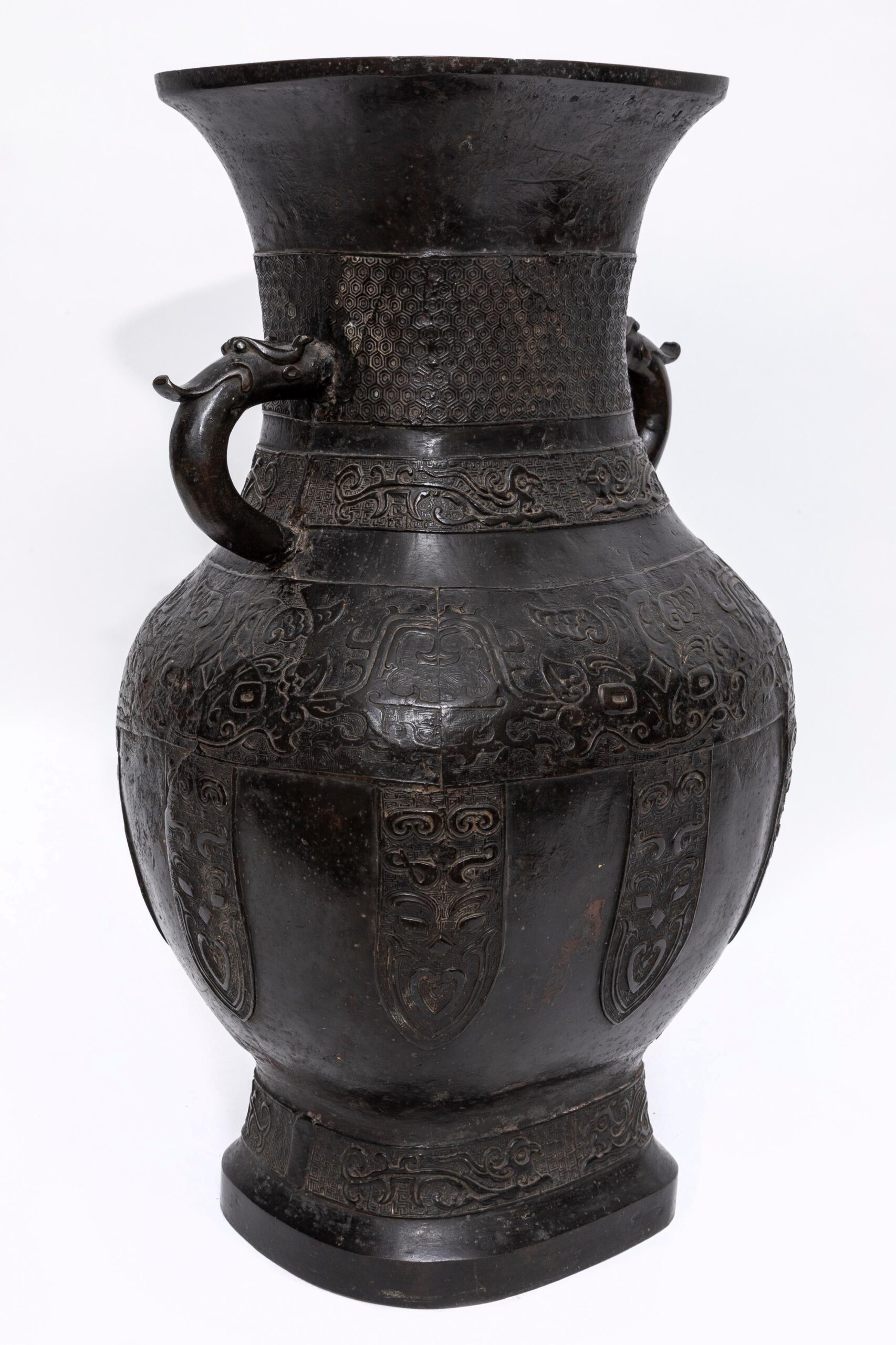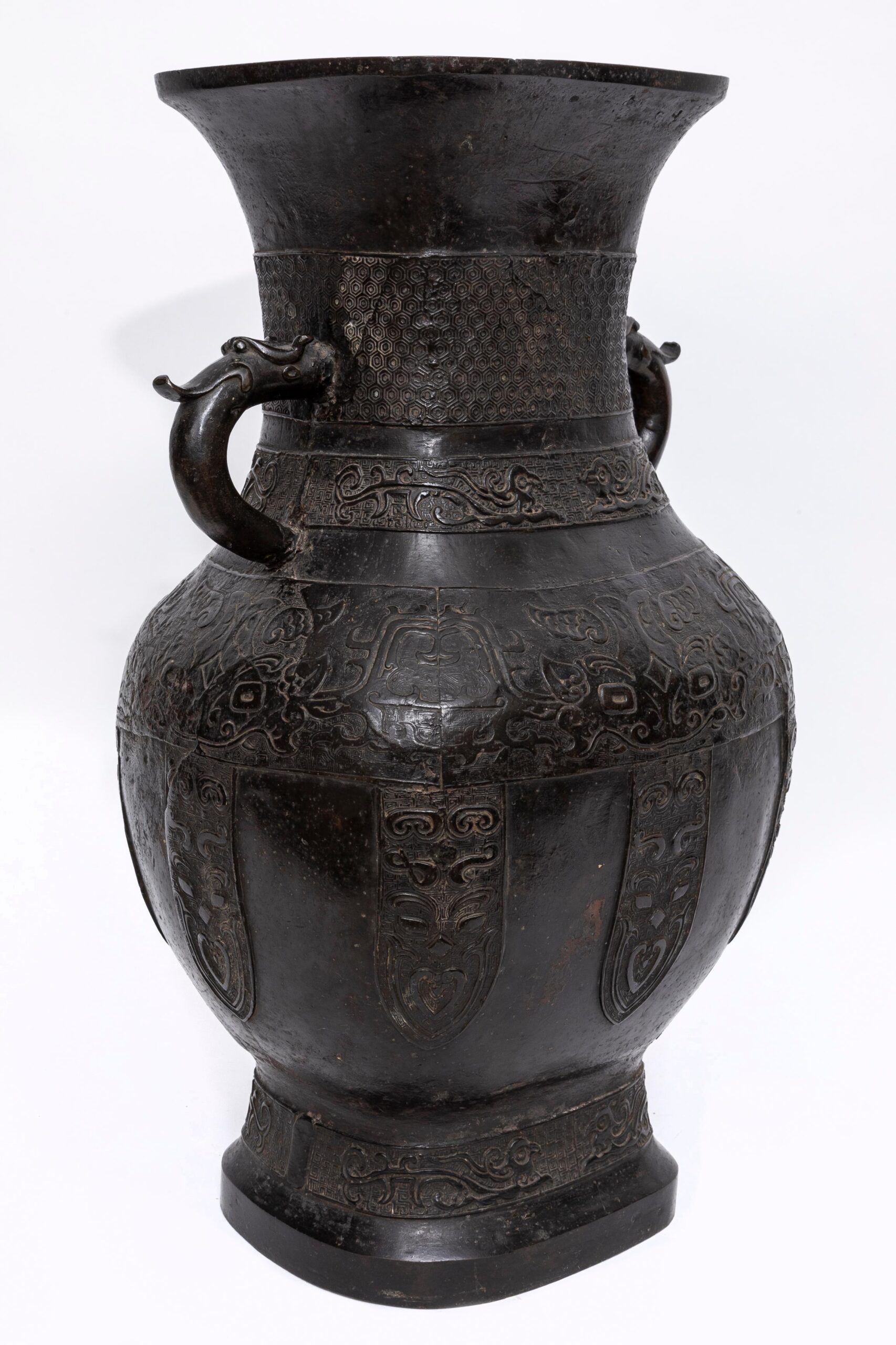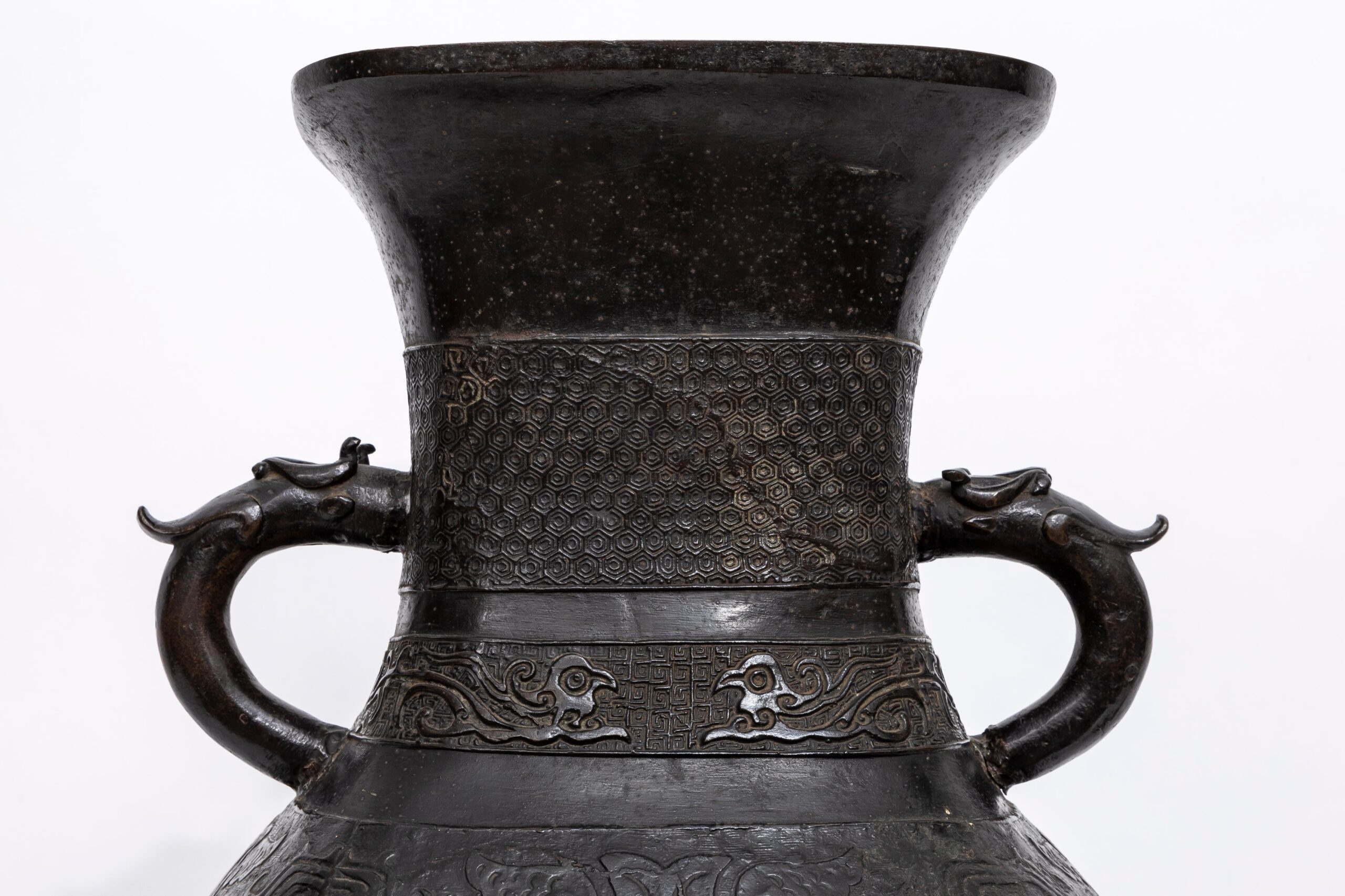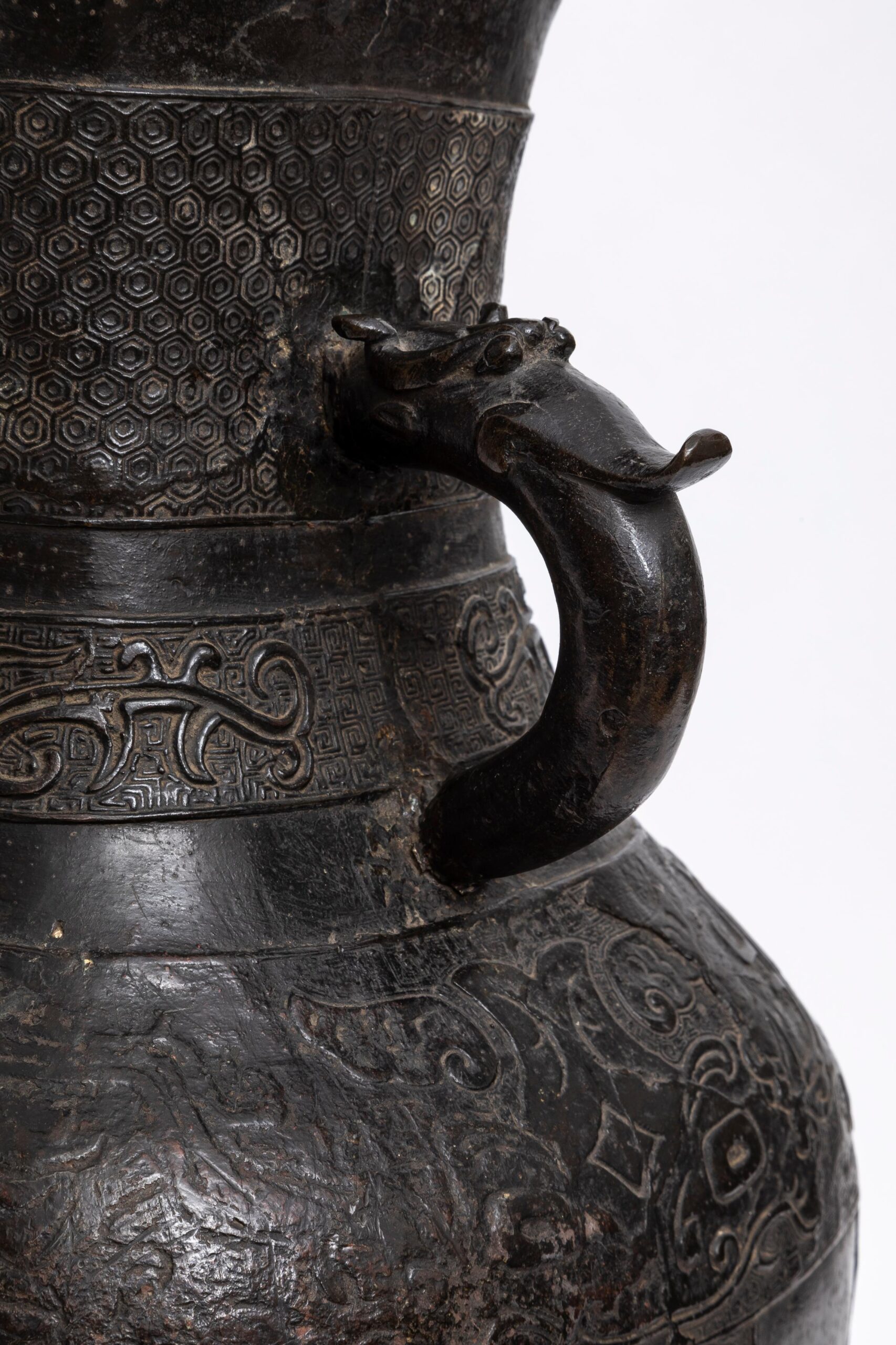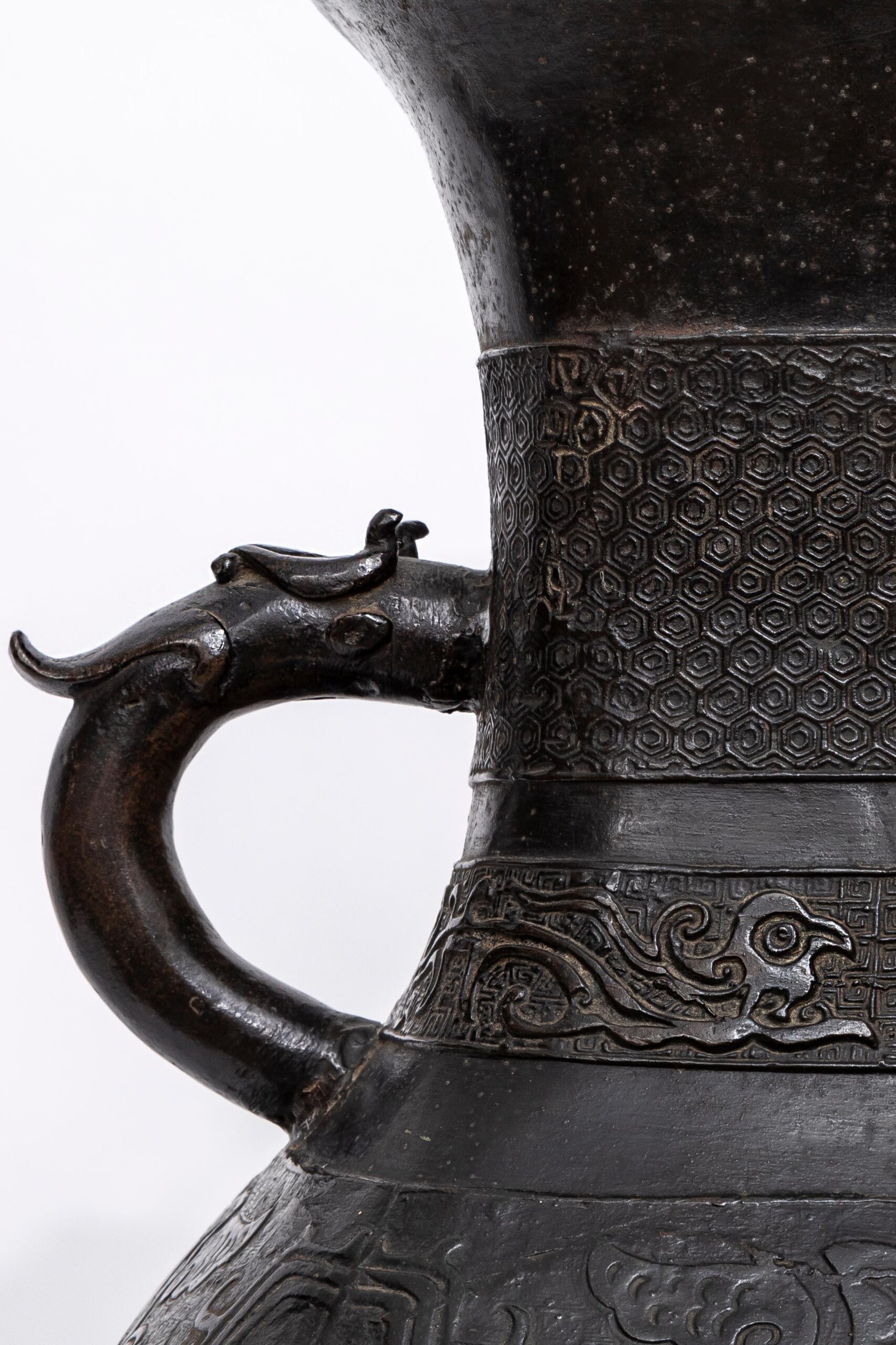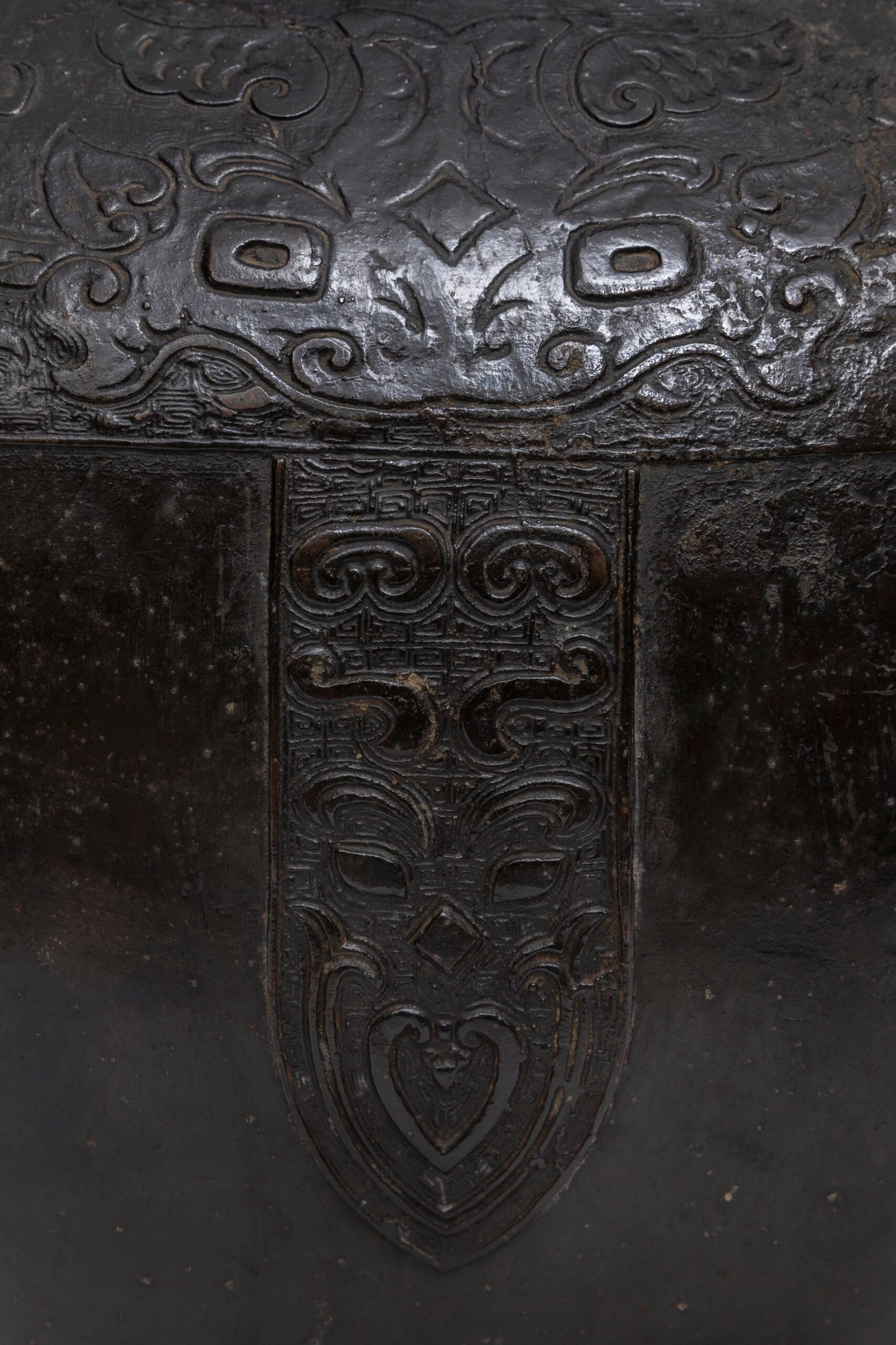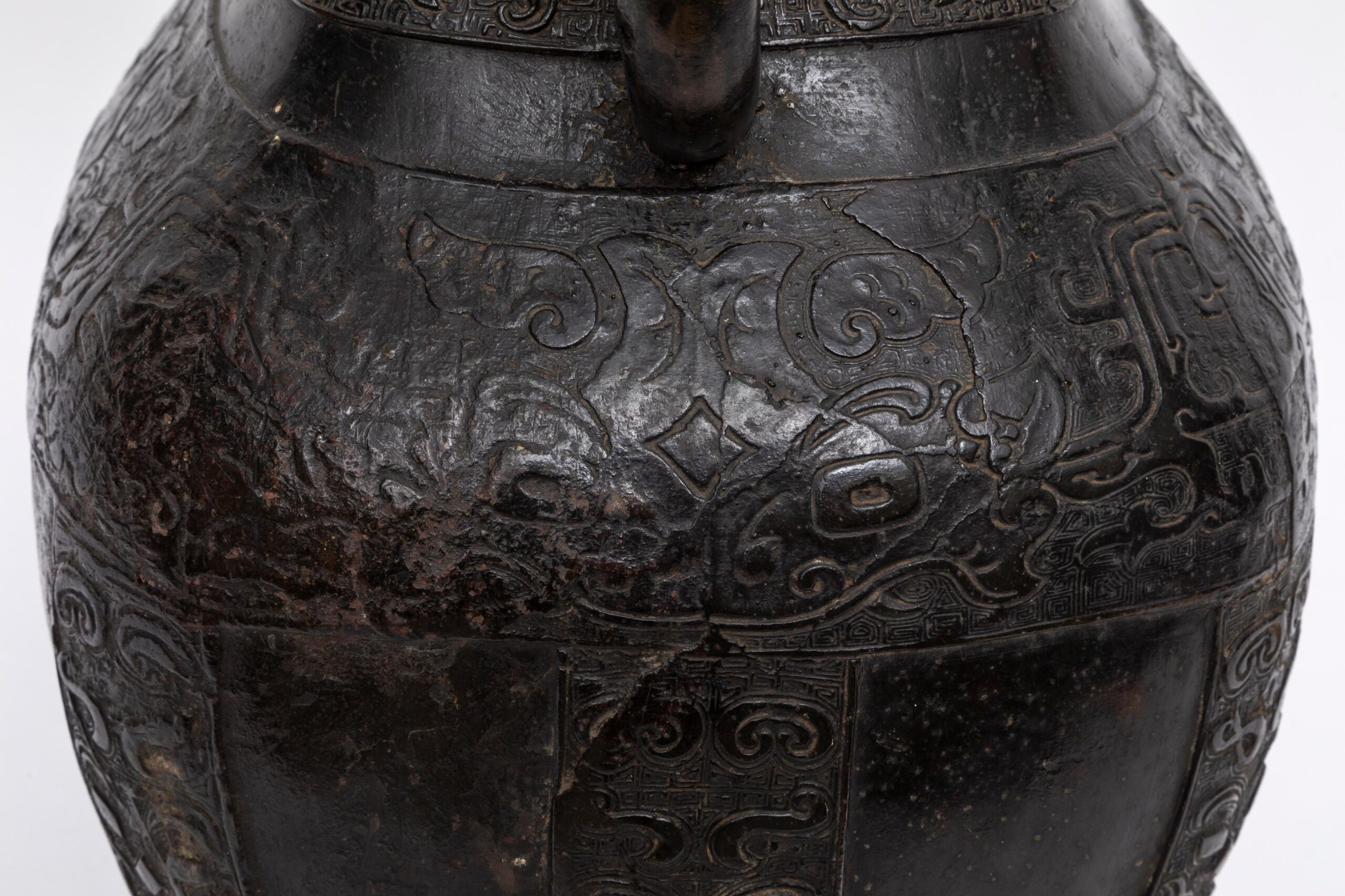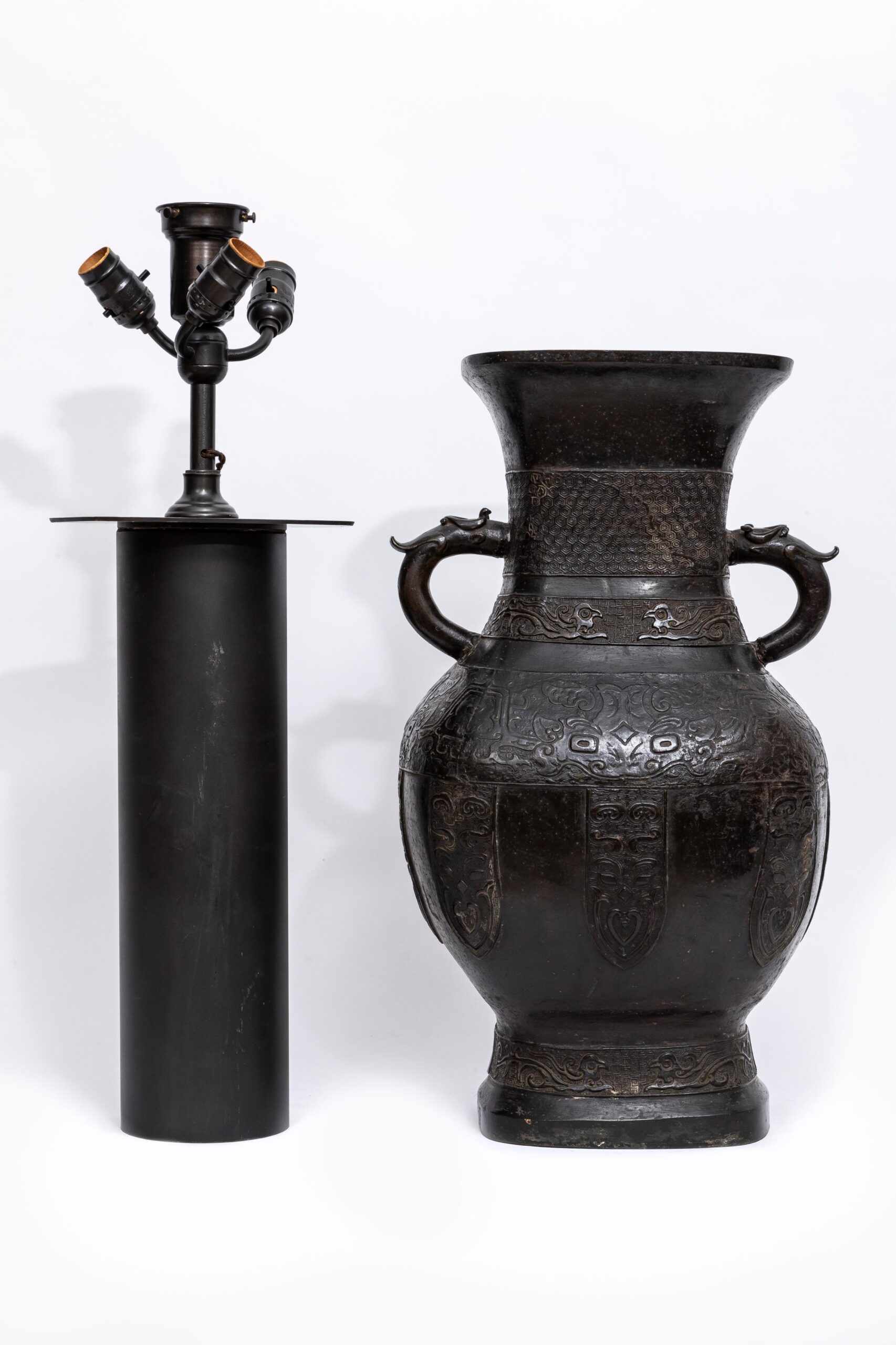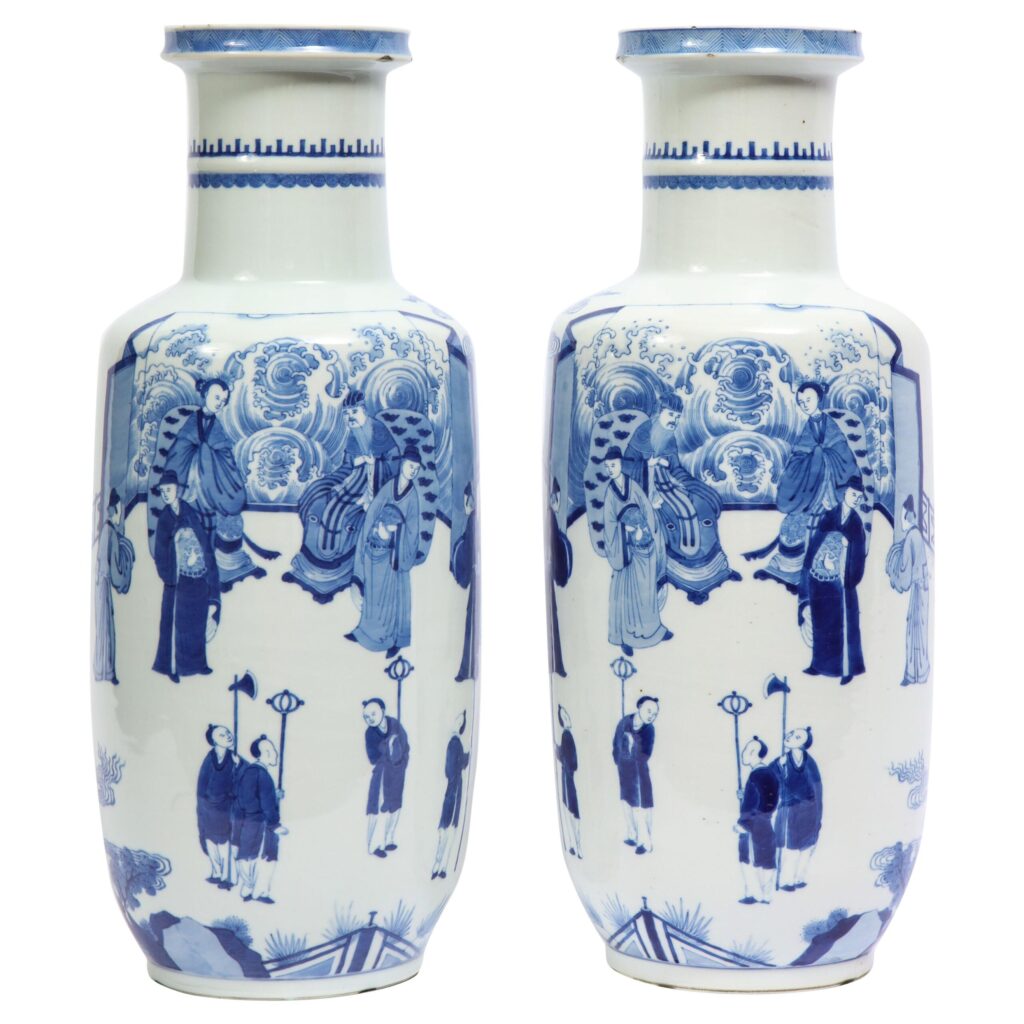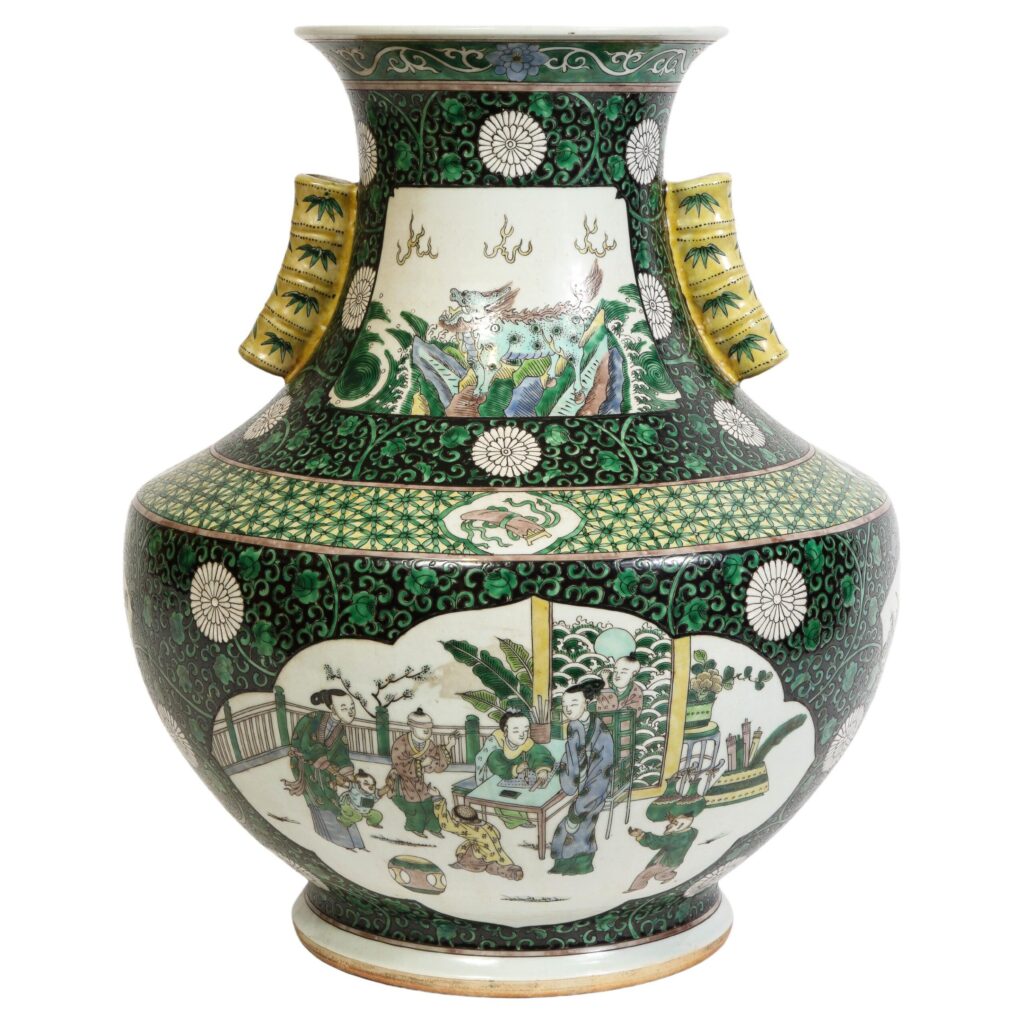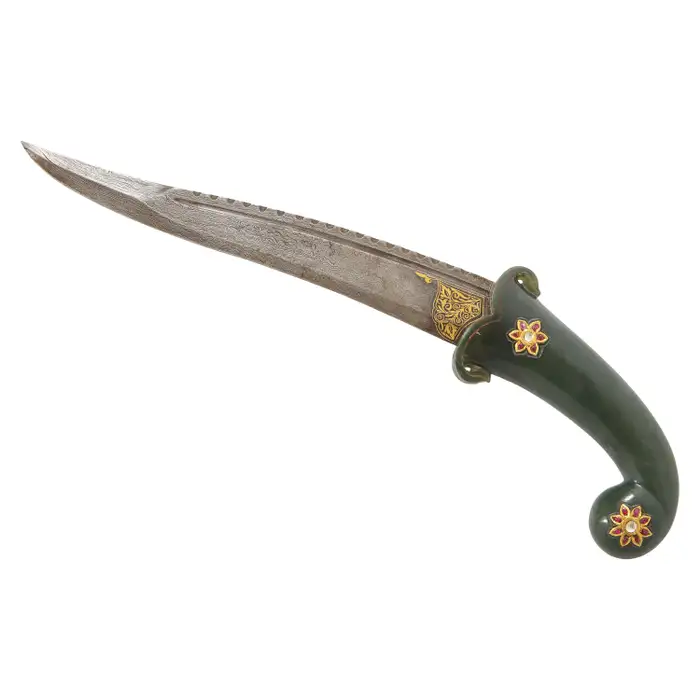A Ming Dynasty Patinated Bronze Relief Work Vase Turned to a Lamp
$22,800.00
+ Free ShippingAvailability: 1 in stock
Product Description
Hailing from the Ming period in 16/17th century, this monumental bronze vase is a fine example of the auspicious decor and markings unique to Chinese furnishings. The vase is cast with taotie masks, the basin is impressed with religious symbolism, and the handles act as two opposing dragons. The various patterned elements on this vase encompass popular Chinese bronze casting and relief carving motifs. This vase was later turned to a lamp without the need of comprimising the original piece. The bronze vase is in original condition with minimal ware.
This particular vase is an ancient Chinese Zun, a ritual wine vessel characterized by a flared opening and bulging midsection. The outside of the vase features a high and low relief decoration that is significant to Chinese symbolism. Along the neck is a relief of twirling, whipping clouds: the winds of chi’i. On the large relief on the basin, there is a relief decoration with archaic motifs like taotie masks and stylized dragons. Vases were often made to furnish the tombs of the Chinese elite. Thus, these vessels were imbued with religious symbolism and imagery to evoke otherworldly spirits for good fortune in the afterlife.
Religious symbolism is an important aspect of this vase. The winds of chi’i on the neck represent the energy of the universe, while the dragon handles symbolize great power and strength. The taotie motif on the basin holds multiple meanings—it has been interpreted as “one of the four evil creatures of the world.” It is commonly represented on Chinese ritual bronze vessels to demonstrate their mystical power and their relationship between humankind and the afterlife.
China, Circa: Ming Dynasty
Height: 23 in (58.42 cm)
Width: 12 in (30.48 cm)
Depth: 9 in (22.86 cm)
